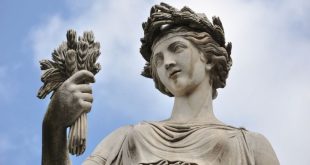Michelangelo Merisi da Caravaggio, one of the most revolutionary painters of the Baroque era, is known for his dramatic use of light and shadow, realistic human figures, and intense emotional depth. While he left behind a legacy of breathtaking paintings, he also had a turbulent life filled with passion, rebellion, and artistry. His words and thoughts have been recorded throughout history, providing insight into his genius. But what are some famous quotes of Caravaggio that reflect his artistic vision and personal struggles?
Though Caravaggio wasn’t as widely quoted as some of his contemporaries, his statements about art, realism, and life have inspired generations of artists. By exploring the famous quotes of Caravaggio, we gain a deeper understanding of his approach to painting, his philosophy of naturalism, and his defiant spirit that challenged the artistic norms of his time.
Key Takeaways
- Caravaggio championed realism and believed art should be based on life.
- He saw art as an evolving journey, always open to learning and growth.
- His use of light and shadow symbolized truth and emotional intensity.
- His defiant and confident nature set him apart from other artists.
- His legacy continues to inspire artists in various fields, from painting to photography.
Caravaggio’s Most Famous Quotes and Their Meaning:
-
“All works, no matter what or by whom painted, are nothing but bagatelles and childish trifles unless they are made and painted from life.”
Caravaggio was a pioneer of realism in art. He rejected relying on idealized forms or classical influences, insisting that true art must be painted from real life. His commitment to using live models and portraying human figures with all their imperfections made his work stand out.
-
“Painting is a natural talent. Anyone who can hold a brush can start painting.”
This quote reflects Caravaggio’s belief that art should be accessible to all. Unlike many artists of his time who emphasized formal training, he championed raw talent and the ability to observe and recreate reality.
-
“No one but I can paint like Caravaggio.”
A statement of confidence and defiance, this quote reveals Caravaggio’s awareness of his own unique style. His dramatic chiaroscuro (light and dark contrast) technique was unparalleled, and he knew no one could replicate his intense realism and emotional depth.
-
“I am always learning.”
Despite his mastery of painting, Caravaggio believed that the journey of an artist is never-ending. He constantly sought to improve and refine his skills, a mindset that allowed him to evolve and innovate throughout his career.
-
“When there is no energy, there is no color, no shape, no life.”
For Caravaggio, art was not just about representation but about emotion and intensity. He believed that energy and passion were the lifeblood of a painting, which is evident in his highly dramatic and expressive compositions.
-
“A good painter has two chief objects to paint—man and the intention of his soul.”
This quote encapsulates Caravaggio’s artistic philosophy. He didn’t just paint figures; he captured their souls, emotions, and the raw humanity behind their expressions. This is what made his religious paintings feel deeply personal and relatable.
-
“Nature is the only master.”
Caravaggio’s deep commitment to realism is clear in this quote. He rejected exaggerated artistic conventions and instead turned to nature as his ultimate teacher, ensuring that every face, shadow, and fold of fabric in his paintings felt authentic.
-
“There is nothing in the intellect that was not first in the senses.”
This idea connects to his belief that art must relate to a direct experience. For Caravaggio, knowledge and creativity stemmed from observing the real world, not from theoretical studies or abstract concepts.
-
“Light brings truth.”
This simple but profound statement defines his revolutionary use of chiaroscuro. Light in his paintings wasn’t just an artistic tool—it symbolized revelation, divinity, and truth, helping to guide the viewer’s focus and enhance the dramatic effect.
Caravaggio’s Influence on Art and His Legacy:
Caravaggio’s words and artistic techniques have influenced countless painters, from the Baroque period to modern-day artists. His bold approach to realism, use of dramatic lighting, and focus on emotional depth transformed the art world and set the stage for future generations.
Many of his quotes reflect a rebellious spirit that challenged traditional artistic norms, yet they also reveal a profound respect for nature and the human experience. His legacy continues to inspire painters, filmmakers, and photographers who use light and shadow to create striking visual narratives.
Conclusion
The famous quotes of Caravaggio provide a glimpse into the mind of one of history’s greatest painters. His words emphasize the importance of realism, energy, and emotion in art, principles that defined his groundbreaking work. Caravaggio’s influence remains strong today, proving that his vision and philosophy continue to shape the world of art long after his time.
FAQs
-
What was Caravaggio’s artistic style?
Caravaggio is famous for his dramatic use of chiaroscuro, realistic human figures, and intense emotional expression in his paintings.
-
Why was Caravaggio a controversial figure?
He often used ordinary people as models for religious figures, which some critics found inappropriate. Additionally, his rebellious lifestyle and frequent conflicts made him a controversial figure.
-
What does Caravaggio’s quote “All works… are nothing but bagatelles unless painted from life” mean?
It means that he believed true art should be based on real life and direct observation rather than imagination or classical influences.
-
How did Caravaggio influence modern artists?
His use of lighting, realism, and dramatic storytelling has influenced filmmakers, photographers, and painters who aim to create intense visual impact.
-
What was Caravaggio’s most famous painting?
Some of his most renowned works include The Calling of Saint Matthew, Judith Beheading Holofernes, and The Supper at Emmaus.
Caravaggio’s art and words continue to inspire creativity and passion, proving that his influence is timeless. His fearless approach to realism and light serves as a lasting reminder that great art is not just seen—it is felt.
Read More: Before News



